
Fact Sheets And Publications
Identifying Nutrient Deficiencies in Ornamental Plants
Introduction and Purpose
Healthy plant growth and reproduction requires 17 nutrients. Of these, carbon (C), oxygen (O) and hydrogen (H) are derived mainly from the atmosphere and water. Soil minerals and/or soil organic matter are the main source of the remaining essential nutrients. When essential nutrients in plant tissue are present at levels below the needs of a specific plant, that plant will often exhibit deficiency symptoms. If left untreated, nutrient deficiencies may reduce plant growth, flowering, fruiting or aesthetic appeal. Under these circumstances, fertilizers are often applied to landscapes and gardens to provide essential plant nutrients and correct plant deficiency symptoms. The purpose of this publication is to provide guidance for the visual diagnosis of major nutrient deficiency symptoms in ornamental plants.
Essential Plant Nutrients
Essential plant nutrients are divided into two main groups: 1) macronutrients and 2) micronutrients. Macronutrients are needed in greater quantities for growth and are generally found in higher concentrations in plant tissue than the micronutrients. This also means that plant growth is generally more limited by the availability of macronutrients than by micronutrients. Nitrogen (N), phosphorus (P), potassium (K), calcium (Ca), magnesium (Mg), and sulfur (S) are plant macronutrients. Iron (Fe), zinc (Zn), manganese (Mn), copper (Cu), molybdenum (Mo), boron (B), nickel (Ni) and chlorine (Cl) are plant micronutrients.
Identifying Plant Nutrient Deficiencies
Plants may exhibit nutrient deficiency symptom if soil levels of one or more essential nutrients are lower than the needs of a specific plant or if soil conditions prevent one or more plant nutrients from being in a form that plant roots can absorb. Even though these nutrient deficiencies often present visual symptoms, it may be difficult to identify specific plant nutrient deficiencies without plant tissue testing. This is because many deficiencies will present symptoms that look very similar to one another. Also, it is quite easy to mistake a nutrient deficiency symptom for other abiotic problems, such as pesticide drift, or a biotic plant disease. As a rule of thumb, biotic problems tend to appear with asymmetrical patterns, while nutrient deficiency symptoms tend to be distributed symmetrically over the plant tissue surface. Plus, if plants are under additional stress (e.g., water, insect or disease) or if more than one nutrient is deficient, visual symptoms may be misleading.
The first step to visual identification of a nutrient deficiency is to determine where on the plant the symptoms are appearing. This will be dictated by whether the nutrient is mobile or immobile in the plant. A nutrient is considered mobile if the plant is able to move it from one part of the plant to another as it is needed. In contrast, immobile plant nutrients cannot move to different parts of the plant. Therefore, deficiency symptoms of mobile nutrients will appear first in older parts of the plant (Figure 1), while symptoms for immobile nutrients will be seen first in new growth (Figure 2). For example, symptoms of N, P, K and Mg deficiencies will manifest in the old growth because they are mobile, while symptoms of Ca, Cu, B, Fe, Mn and Zn deficiencies will appear in the new growth because they are immobile.
The next step to visual identification of a nutrient deficiency is to determine the characteristics of the symptoms. For example, leaves may appear chlorotic or yellow in color (Figure 1) or there may be necrotic or dead tissue (Figure 3). Symptoms may also present on the leaf margins or tips (Figure 3) or be interveinal (Figure 4).
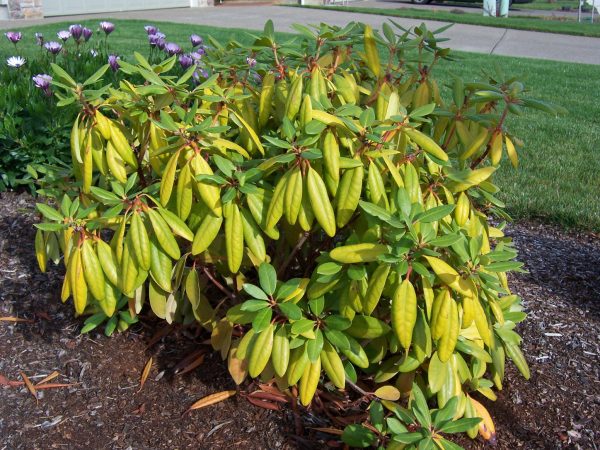
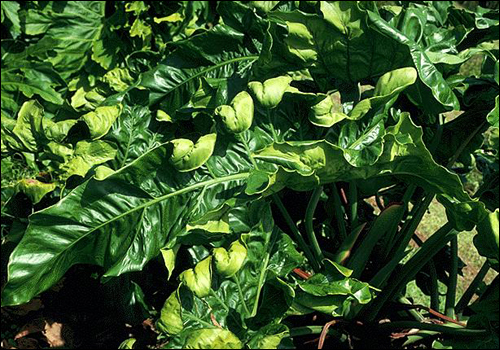
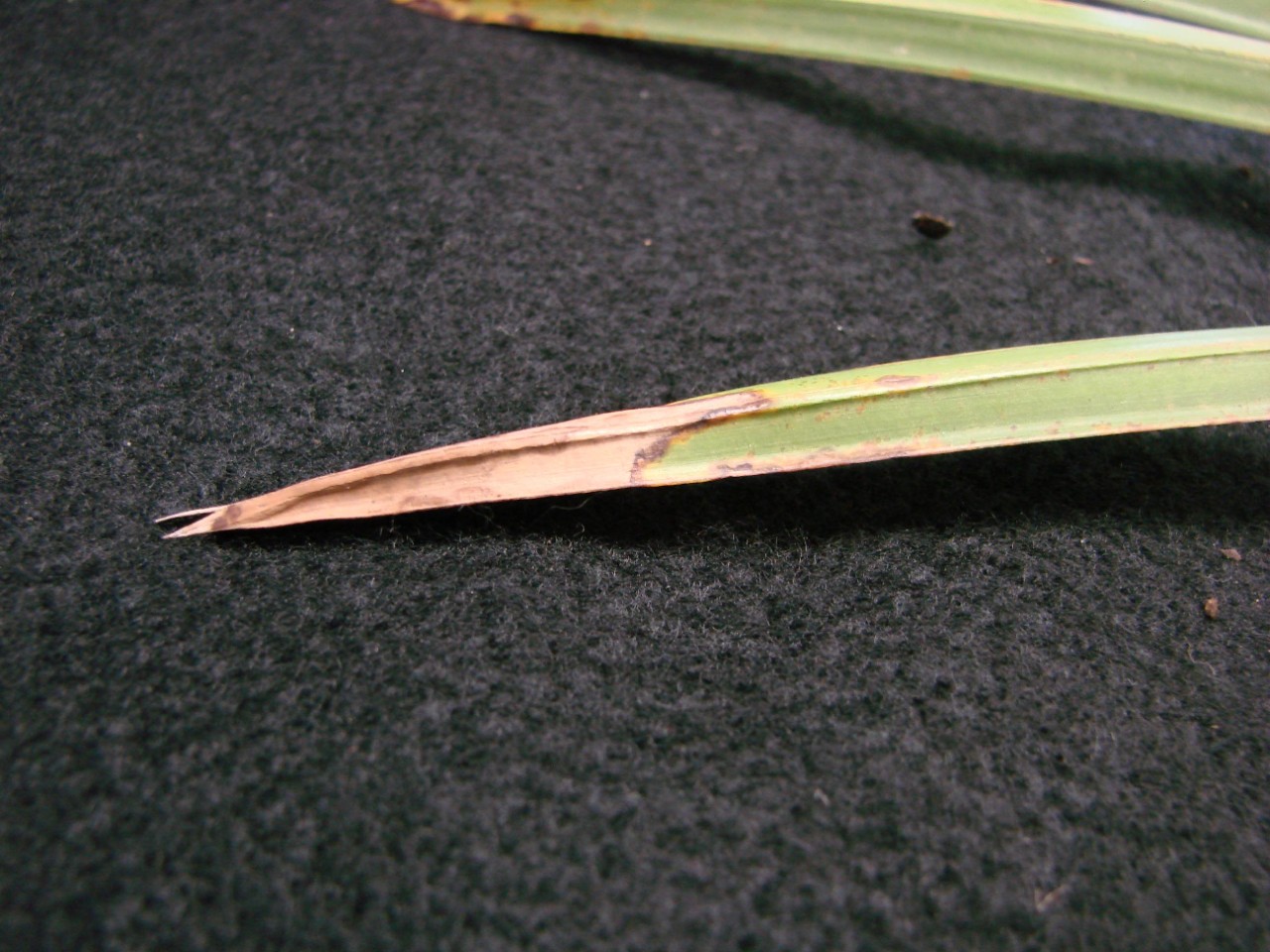
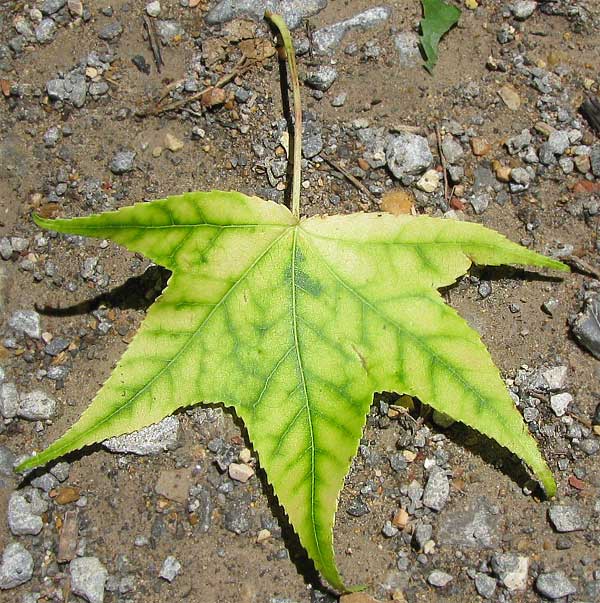
The dichotomous key can be used to aid in the visual diagnosis of common nutrient deficiencies in plants when symptoms present first in old leaves (Figure 5) or new leaves (Figure 6). Once a nutrient deficiency symptom has been identified, corrective actions, such as applying fertilizers or lime, can be taken. Before fertilizers are applied to the soil, a soil test should be completed to determine the nutrient status and pH of the soil. This is important because when soil pH is too acidic, elements such as K, Ca and Mg may exist in a chemical form that plant roots cannot absorb even if these elements are present in sufficient amounts. Similarly, Fe, Mn, Zn and B exist in forms that are unavailable to plants at alkaline pH. Under these circumstances, a simple soil test can prevent the application of excess fertilizers and thereby reduce the risk of plant or environmental degradation. Also, it can identify situations where foliar fertilizer applications may be more effective than soil applications.
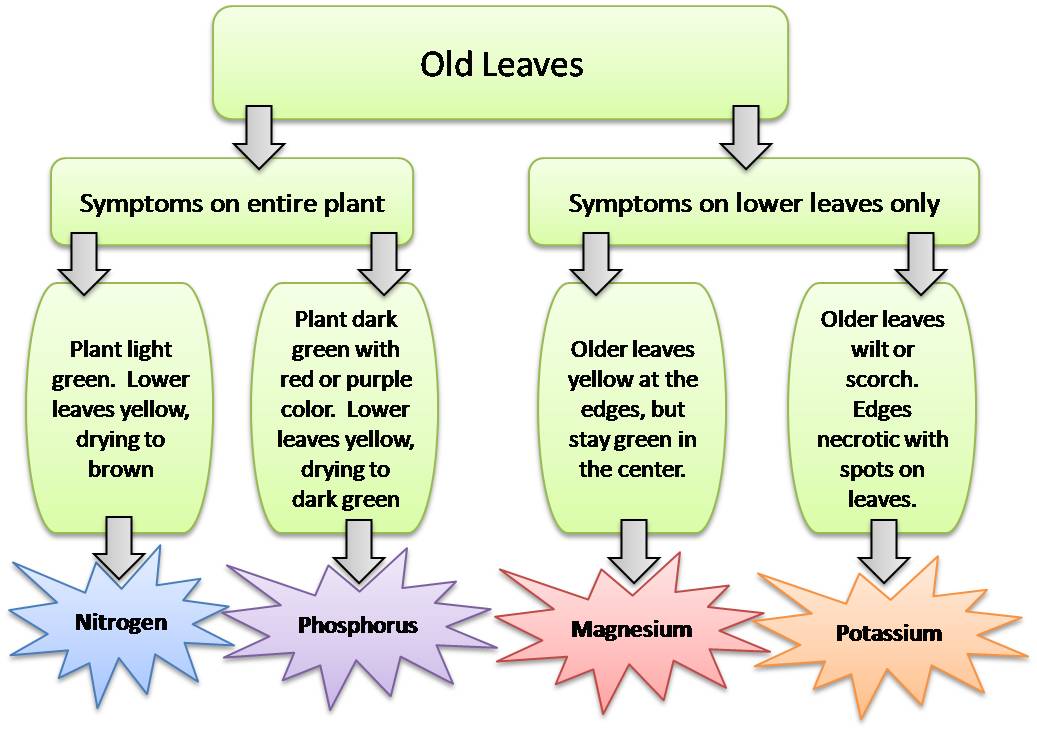
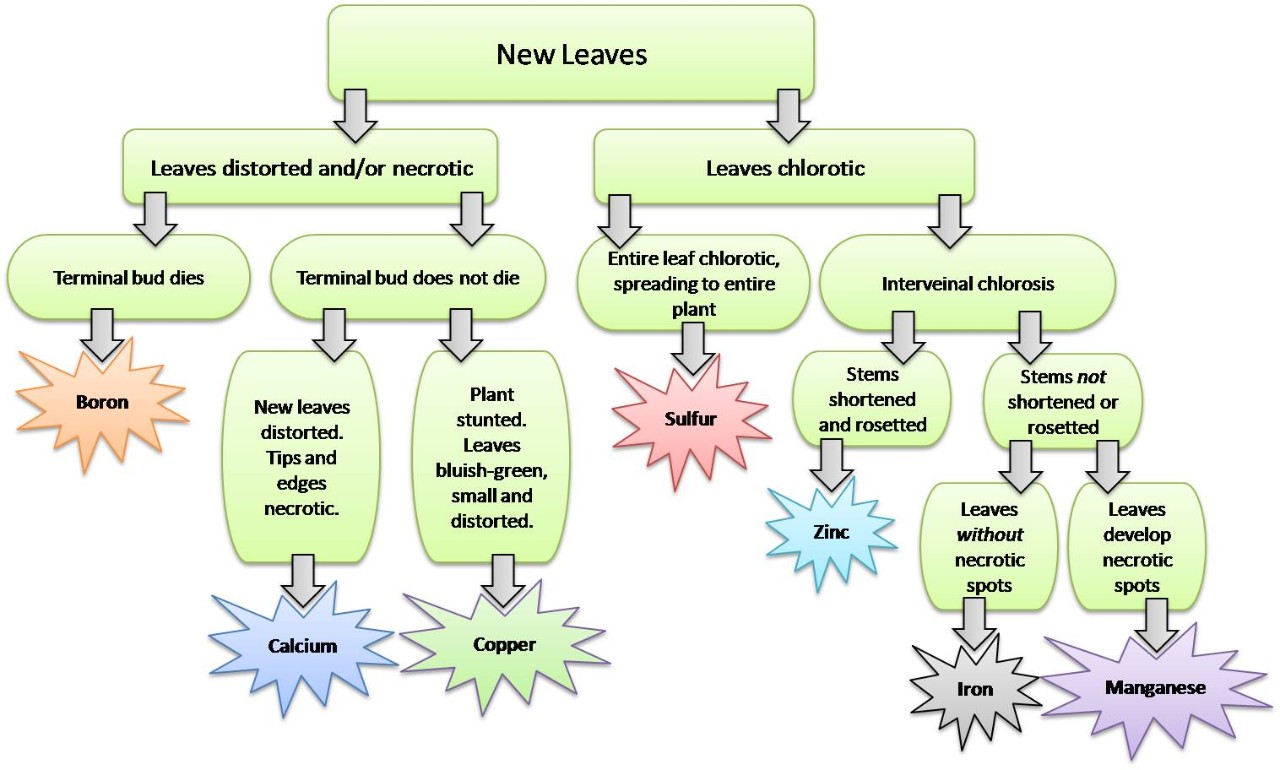
Author(s):
Amy L. Shober, University of Delaware
Geoffrey C. Denny, Mississippi State University
Based on original documents prepared by A.L. Shober and G.C. Denny for UF-IFAS
Original Publication Date: September 2017. Adapted from original publication developed by A.L. Shober and G.C. Denny for UF-IFAS.
References:
Shober, A.L. and G.C. Denny. 2010. Identifying nutrient deficiencies in ornamental plants. SL318/SS530. University of Florida – IFAS, Gainesville, FL. http://edis.ifas.ufl.edu/ss530
UD Cooperative Extension
This institution is an equal opportunity provider.
In accordance with Federal law and U.S. Department of Agriculture policy, Cooperative Extension is prohibited from discriminating on the basis of race, color, national origin, sex, age, or disability.
